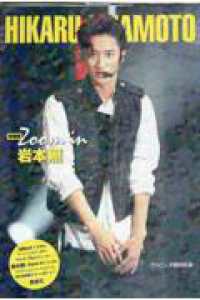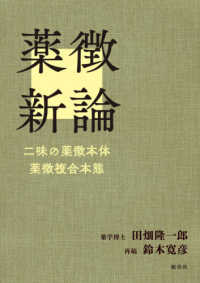- ホーム
- > 洋書
- > 英文書
- > History / World
Full Description
Stone tools are the least familiar objects that archaeologists recover from their excavations, and predictably, they struggle to understand them. Eastern Africa alone boasts a 3.4 million-year-long archaeological record but its stone tool evidence still remains disorganized, unsynthesized, and all-but-impenetrable to non-experts, and especially so to students from Eastern African countries. In this book, John J. Shea offers a simple, straightforward, and richly illustrated introduction in how to read stone tools. An experienced stone tool analyst and an expert stoneworker, he synthesizes the Eastern African stone tool evidence for the first time. Shea presents the EAST Typology, a new framework for describing stone tools specifically designed to allow archaeologists to do what they currently cannot: compare stone tool evidence across the full sweep of Eastern African prehistory. He also includes a series of short, fictional, and humorous vignettes set on an Eastern African archaeological excavation, which illustrate the major issues and controversies in research about stone tools.
Contents
1. Introduction; 2. Stone tools: essential terms and concepts; 3. How to read stone tools; 4. Eastern Africa; 5. The Eastern African lithic record; 6. Cores and tools; 7. Flakes/detached pieces; 8. Retouched pieces; 9. Percussors and groundstone artifacts; 10. Conclusion.








